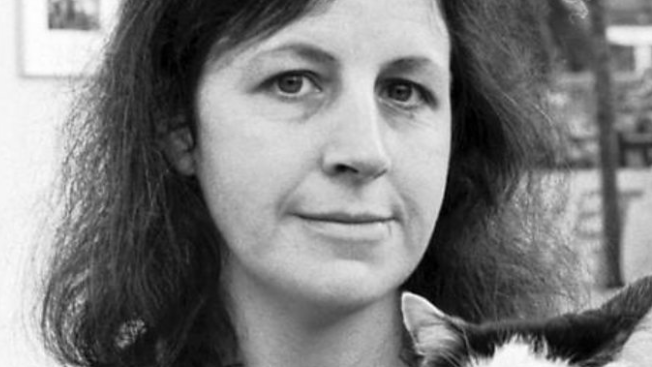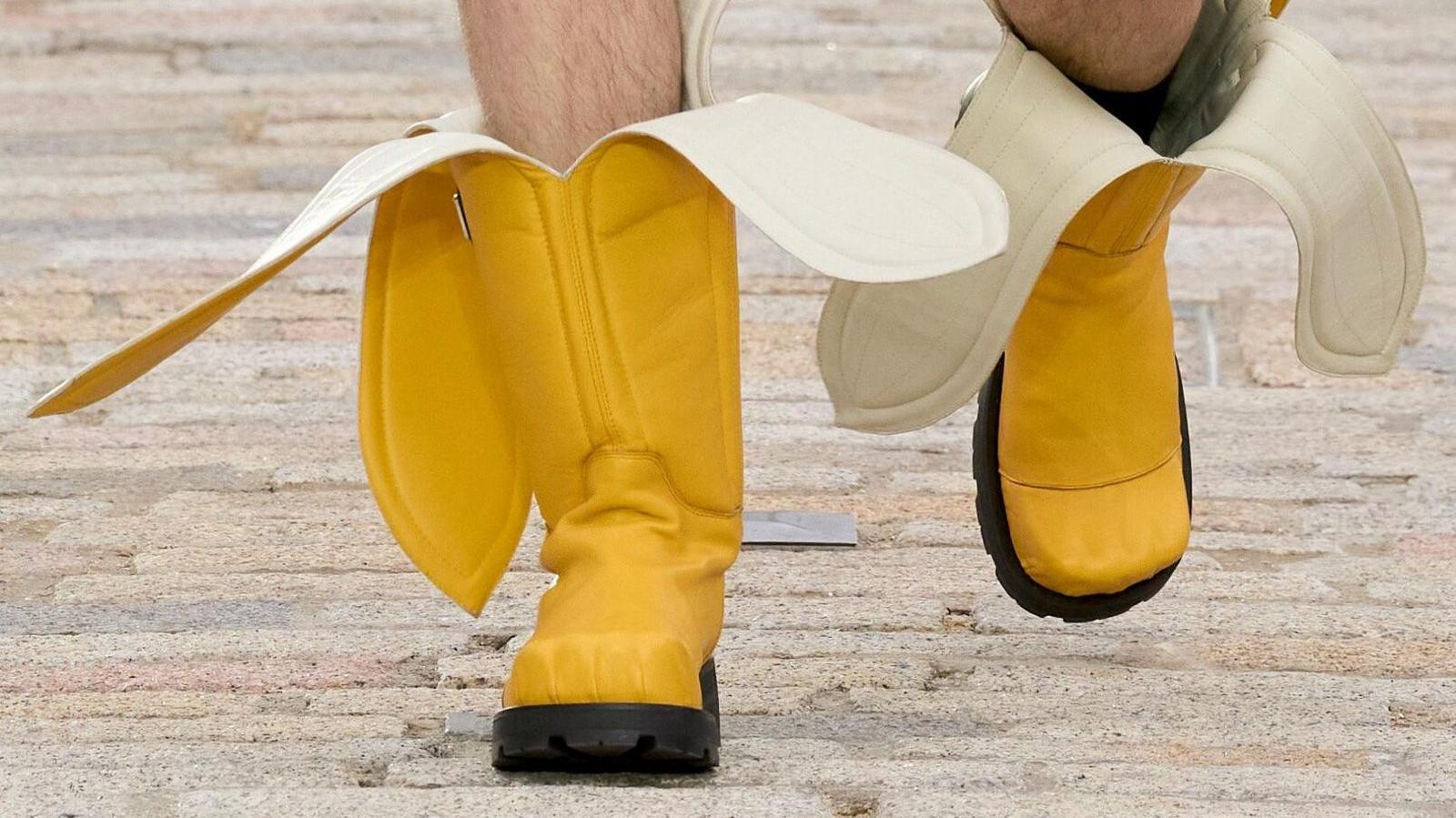Museum curator behind Connolly's Banana Boots dies

Dr Elspeth King's decision to display Billy Connolly's Banana Boots at the People's Palace proved controversial
- Published
Former museum director and social historian Dr Elspeth King, who helped transform Scotland's cultural landscape through her work in Glasgow and Stirling, has died.
She was best known for her 16 years at the People's Palace and for leading the Stirling Smith Art Gallery and Museum, where she championed Scottish history, art and heritage.
She was also recognised for her research into the Scottish suffrage movement.
The Stirling museum paid tribute to its former director, saying: "Elspeth was at the heart of The Smith for a long period of time and did a great deal for Stirling, for which she will be fondly remembered."
The spokesperson added: "Our condolences go out to her husband, Michael and all her family and friends."
Born in Lochore, Fife, into a mining family, Ms King studied medieval history at the University of St Andrews, graduating with first-class honours, before completing a postgraduate course in museum studies at the University of Leicester.
She joined the People's Palace in 1974 as curator of social history, a post she held for 16 years.
Controversial decision
One of her first curatorial decisions sparked controversy when she put Billy Connolly's iconic banana boots - designed by Glasgow pop artist Edmund Smith in 1975 - on display.
Some visitors complained that the comedian's profanity-laced routines were too crude to be celebrated in a public museum.
Speaking to BBC Radio's Good Morning Scotland programme in 2018, she said: "I remember the letters in the Daily Record about how Glasgow museums had been trashed by the addition of Billy Connolys's Banana Boots and didn't this man do sweary words on the television."
During that time, she organised several high-profile exhibitions, including Michael Donnelly's 1974 Crucifixion sketch, which re-imagined the Last Supper taking place in a Glasgow pub, and was cited as particularly offensive by critics.

Billy Connolly's boots are on display in Glasgow's People's Palace
In 1977 Ms King hired renowned writer and artist Alasdair Gray as "artist-recorder" at the museum.
The job, created through a government scheme, saw Gray document the city's streets and people in a series of paintings and drawings.
Under her curatorship, the People's Palace won European Museum of the Year in 1981 and British Museum of the Year in 1983.
After leaving the People's Palace in 1990, Ms King became director of the Dunfermline Heritage Trust, helping to restore Abbot House, the town's oldest secular building, as a heritage centre.
She went on to lead the Smith Art Gallery and Museum in Stirling from 1994 until her retirement in 2018, during which time she steered the institution through funding challenges and helped secure its future after a public campaign.
In 2005, she was awarded an honorary doctorate by the University of Stirling for her contribution to Scottish museums and her promotion of the nation's history and culture.
More on this story...
- Published26 July 2024

- Published17 February 2024
